Between 1798 and 1800, Malta changed hands twice. The feudal Knights were easily replaced by Napoleonic France, whom the Maltese initially welcomed, then revolted against a mere 82 days later ushering in the British Empire. ‘Why?’ is a mystery lost in the history books that gloss over the period demonising Napoleon while exalting the British who ruled Malta as a colony till independence in 1964. The Editor met Dr Charles Xuereb to find out.
Can you imagine 10% of the population being killed? Or one in every 10 people you know losing their life and being forgotten? Their sacrifice for Church, God, and country was lost in time till Dr Charles Xuereb’s long overdue book (France in the Maltese Collective Memory) brought their sacrifice back to light.
I was shocked. 10,000 Maltese died in what partly resembles a civil war between rural Malta and the city folk between 1798 and 1800. This was a time of fallen-from-grace-knights, French Revolution Napoleonic France, Imperialist Britain and an all-powerful Church. And in 1798, Malta became centre stage of this conflict.
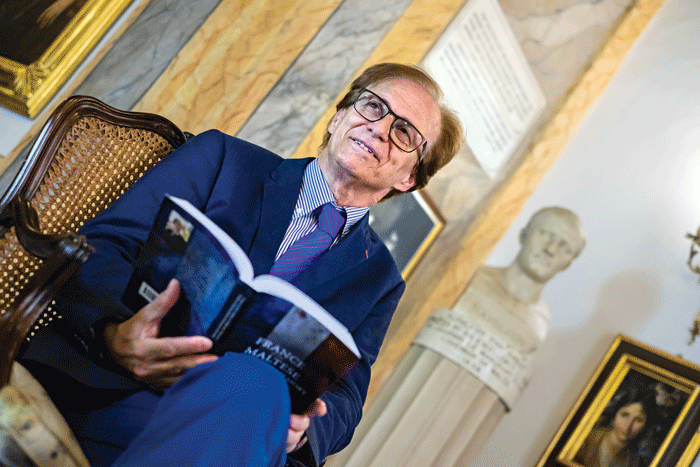
Before the arrival of the French, three institutions jostling for power ruled Malta. The Order of the Knights of St John had been the dominant ruler since 1530. They did not tax the Maltese or allow them to become knights. When Maltese writer and philosopher Mikiel Anton Vassalli suggested that Maltese citizens should be allowed into the Order he was imprisoned.
Really, the only way for the Maltese to gain prominence would have been through the Curia (Catholic Church). The Curia owned one-third of the Islands through a clever scheme invented a few hundred years earlier. Rich sinners could leave their property to the Church in their will. ‘The income of that property [would fund] masses for your soul forever,’ explained Dr Charles Xuereb. Instant forgiveness. Malta must have had quite a few guilty consciences.
The third power centre was the Inquisition, but although strong they were doomed to the history books; that institution should never have lasted so long.
A Bloodless Invasion?
This situation pre-1798 left the Maltese oppressed, exploited, and rather unhappy. Vassalli led around 11,000 insurgents who then merged with the Jacobins that helped Bonaparte take over the Island on 12th June 1798. A year before landing on Malta, Bonaparte stated that nearly 40,000 people supported the French in Malta, just under 40% of the population. Xuereb bases these statements on several accounts— including his own research—through archival letters, meetings, and documents, in addition to British, pro-British Maltese, and just one French account (by Frenchman, Jean de Bosredon de Ransijat). This bloodless event is not the same history I was taught at school.
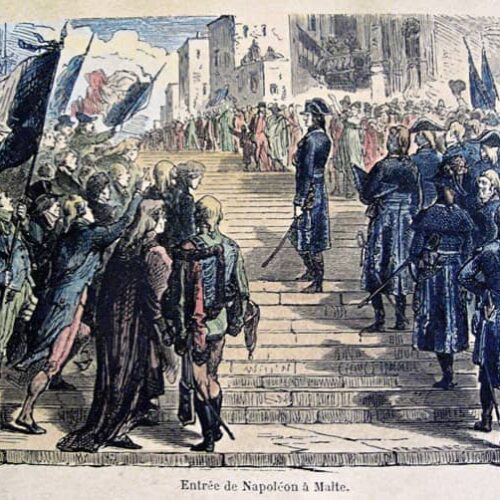
The French came to liberate the Maltese from a despotic, ailing Order from the feudal era. Vassalli’s nationalistic aspirations made this possible. After the French Revolution, a republican system of government was put into place in Malta to secularise administration and give people rights. Ecclesiastical leaders aided by the British Navy in the Mediterranean stopped all of this progress and restored privileges to the elite, justifying the counter revolt by demonising the French as anti-religious and anti-Maltese. As a result, public education was delayed for another 80 years and representative government for more than a century. Malta was humbled into a fortress colony and its people deemed unable to govern themselves.
Xuereb contrasts this with Canon Panzavecchia’s account published in 1835, the first Maltese point of view of the reviewed period. Panzavecchia, who was one year old in 1798, influenced many subsequent history books. Panzavecchia describes ‘two years of calamitous occupation’ after an invasion that saw Bonaparte trick the Order into submission. He also mentions a degrading convention, with the Maltese being forced to sign an unfavourable treaty to integrate Malta as part of France in 1798. He forgets to mention the benefits Napoleon brought to the country, the support he elicited, or the bloodless ‘invasion’. Panzavecchia was celebrated and achieved a good position soon after the British approved the publication. The time of press liberty had not yet come.
Most Maltese perceive the French as evildoers who pillaged our churches carrying off all our silver, who stole the Knights’ treasures, and caused endless harm to Malta.
An account like Panzavecchia’s influenced the Maltese collective memory: the shared memory of a group of people. Most Maltese perceive the French as evildoers who pillaged our churches carrying off all our silver, stole the Knights’ treasures, and caused endless harm to Malta. Xuereb analysed the Maltese collective memory to discover why it was blocked, and still hinges on this anti-French attitude. This attitude is bizarre. Italy and Germany both bombed Malta in World War II but ‘we don’t hate the Germans for that, we don’t hate the Italians, they are close to us and remain very close,’ he told me during our interview, his voice becoming passionate. ‘Why are we still keeping in our hearts something against the French from 217 years ago? What’s the reason? The [Maltese] collective memory has been manipulated to demonise the French period.’
Elements of this influence can be seen today. I recently visited the new Heritage Malta National War Museum at Fort St Elmo (built by the Order). While nicely laid out with proper contextualisation of colonial powers, the exhibition puzzled me. It goes at length to explain how Napoleon improved Malta: the liberties, education (he even encouraged Maltese to study in Paris), the abolition of slavery, and so on, but it failed to explain why the Maltese revolted after less than three months of French rule. It mentions that Napoleon bombarded Valletta, then mentions that no blood was spilled. French ship cannons must have been notoriously inaccurate. Maybe that is why they lost at Trafalgar. It seems to be contradictory with previous smear campaigns while keeping with the facts, leaving an impression of confusion on visitors.
Apart from rigorous historical analysis, Xuereb uses analysis of collective memory theory to figure out why the Maltese memory is blocked. He focuses on Maurice Halbwachs’ presentist theory of collective memory, but mentions many others like Pierre Nora and Paul Ricoeur. Importantly, this theory coalesced the concept of collective identity with how memories are shared between countries. The Maltese collective memory is what gives Maltese people an identity, as remembered through ‘images of the past through places, monuments, and rituals of commemoration’, writes Xuereb. These interpretations are also always reflected in the present. In Malta, many of our place names, monuments, and public holidays are British leaning. The British had a lot to gain by making the Maltese love them; but before we get to why the French were demonised, let us continue with our story.
Maltese War Crimes
The stage has been set. 1798: Bonaparte is heading to Egypt while Nelson is fast chasing him. He knows that in Malta, he can quickly and easily overthrow the rich despotic knights thanks to local support, while replenishing his troops and coffers.
On 9th June he arrived in Malta and by the 12th he had taken it over without shedding blood. His troops landed in several places including Spinola to water the fleet at the infamous Bjar ta’ Napuljun (cisterns of Napoleon). The history books paint this as subterfuge by the French to sneak an attack on the Knights, while official documents show that the watering process was documented.
With the troops watered and fed, Napoleon’s next problem was money. He cleverly relocated the knights’ Grandmaster to France, while taking over their possessions. With the Church ‘there was an agreement in front of three notaries’ for silver and property in exchange for ‘St John’s Co-Cathedral which, up to then, the Maltese Curia could not use, but they were invited as guests occasionally. The first mass by the Maltese bishop, Labini, was celebrated on 14th July 1798 and, whenever the French took silver, it was documented. [In fact,] there are published calculations with how much the government received from the Church—written details of every item—a sum that amounted to circa €49,000.’ The French took a lot of silver to fund Malta’s administration and their war, but they did not steal it all.
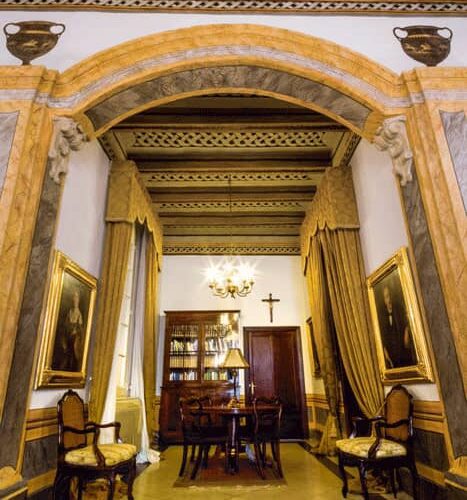
The French did pillage. ‘We know of four small incidents. [French soldiers] were reported by parish priests to have stolen some silver and priests’ vestments. Bonaparte, on his second day in Malta executed one of his senior officers because [the officer] went with a group of soldiers to St Catherine’s convent in Valletta near St Dominic’s church and tried to [steal].’ Bonaparte ordered that all of them be executed. He relented by condemning only the most senior officer to the firing squad, there and then. Bonaparte clearly wanted to show that pillaging was not allowed in Malta. In fact, he had plans to use some of the silver and Church property for education and hospitals. The French also planned to tax the Maltese—a new concept—to be able to provide government services for the country. This must have annoyed several nobles and clergymen.
A major thorn blocking the Maltese collective memory from forgiving the French is that Bonaparte took many of the Order’s treasures. British historians said he loaded L’Orient, his flagship, with over a million pounds worth of loot. Other historians calculated that this was much less, but the facts are hard to verify. When recent underwater searches examined the resting place of L’Orient in Aboukir no Maltese treasure was ever found. The French did take some artefacts, famously La Valette’s ceremonial sword now exhibited at the Louvre. The French took the item, together with several others, as part of the legal agreement they signed with the Order. But if France is serious about improving the Maltese collective memory it should be returned—a point Xuereb fails to emphasise. It is common practice for the old colonial powers to return ill-gotten items to their rightful owner. This also applies to the British, who captured the French Sensible in 1798, which did have several Maltese artifacts like Ximenes’ canon that the British never returned.
After introducing a new Republican government and liberal reforms, the Maltese revolted against the French on 2nd September 1798. ‘After 82 days [the Maltese] rose against the French, whom they had previously asked for liberation. It doesn’t make sense.’ said Xuereb, ‘I remember him [Xuereb’s Lyceum history teacher] telling me … “Xuereb that is a pertinent question but there are no answers. We know so little about what really happened, and you have to dig very deeply to find the truth.”’ Now Xuereb seems to have found that truth.
In 1798 Malta did not have one unified population (neither does it today, being split between a political red and blue). Xuereb uncovered a great divide. ‘The upper classes of the Maltese [in the harbour region] appeared to favour the French,’ writes Xuereb, while ‘the illiterate villagers, “dominated by the clergy,” executed the historical and successful peasants’ revolt.’ But why would God-abiding clergymen push the Maltese to revolt? On 10th June 1798, two days before the Order surrendered, Labini—the Bishop of Malta—offered Mdina’s keys to the French and invited French General Vaubois to lunch at the Episcopal Palace. ‘But then the Church realised that it would lose much of the privileges it had over the people [of Malta].’
These privileges included growing tithes, stipends from the Curia, payments for services to the parishioners (funerals and payments for receiving the sacraments), one-tenth of peasants’ harvest, rent, and a few more. It was a very different Church from today. The revolt was led by a prominent merchant, clergyman Canon Caruana, and Fraternity Rector Emanuel Vitale with a few other businessmen such as cotton entrepreneur Vincenzo Borg, who used to supply the Order but was now risking failure. For the successful revolt, the Canon was rewarded by being anointed Bishop of Malta. The Church had good reason to counter-revolt and reverse Bonaparte’s reform. The British cleverly realised the power of the Church and supported the Catholics.
Another clue lies in the brutality of the revolt. It started on 2nd September when the government was auctioning off appropriated property belonging to religious orders. Ironically, this government was made up of ‘two [French] out of 70 [Maltese]’. The initial clashes soon turned into the massacre of over 60 French soldiers in Mdina, together with their women and children. The soldiers were cut open with their livers removed, cooked, and eaten. Maltese sympathisers either ate human liver or faced death. Such violence left little choice for the peasantry: either force the French out or face severe repercussions.
Malta managed to beat one of the greatest powers of the 18th century, a victory that left at least 10,000 Maltese dead. […] Till today, the victory is not even celebrated as a national holiday.
Other violent incidents occurred. After Mdina, the peasant army led by the clergy circled the built-up harbour region and started the two-year-long siege on the 4,000-strong French army within. In two vicious incidents, two young boys and a lady were brutally killed when leaving the besieged area for vegetables, while a French soldier was beheaded for eating a fig, his head left on a spike. Xuereb thinks that the clergy and traders bought the services of mercenaries. They then used them to tie the hands of the Maltese peasants into a fully-fledged countryside revolt. These mercenaries were probably the very slaves Bonaparte’s reforms had just freed. On 1st September 1800, Alexander Ball estimated 3,000 troops were occupying the front posts besieging the French. The author Cavaliero stated that Bonaparte had freed around 2,000 slaves—1,400 Moors and 600 Turks—who would have been treated brutally before being freed, much more likely culprits to the atrocities.
Xuereb then goes on to say that, when the French fell, there were ‘summary executions, attacks on property, punishment, and banishment’ of Maltese. Jacobins, doctors, and magistrates were killed. Proper trials appeared unnecessary. This seemingly contrasts with a people unable to commit atrocities and seems more likely to be committed by mercenaries.
Why the French have a Bad Reputation in Malta
The British had every reason to encourage the Stockholm Syndrome (when hostages empathise with their captors) in the Maltese. For all the brutalities committed, Malta managed to beat one of the greatest powers of the 18th century, a victory that left at least 10,000 Maltese dead. The greatest loss of life ever experienced. Till today, the victory is not even celebrated as a national holiday. By glossing over this part of history, the British made sure that the Maltese would never gain the ‘self-confidence to aim at total autonomy.’
The British did not want to empower the Maltese, but instead wanted a servile colony to be used as a military fort and port. When the French surrendered due to the combined efforts of a British sea blockade and Maltese-led land siege, the Maltese were not involved in any treaties. The 5th September 1800 capitulation basically signed Malta off to the British. The British were meant to leave, but did not—not that the Maltese wanted the Order back. This handover was cemented in 1814. In the meantime, the Maltese tried to claim their political rights but failed. Malta was deemed unfit to govern itself.
The Catholic Church supported British rule in Malta; an uneasy relationship at times, since the Church still owned one-third of their colony. However, ‘the British had a trick with the local Church; they used to go to the Holy See first. The Holy See used to accept a lot of the British proposals in Malta because it was working hard to gain recognition of Catholics in England. Catholics were still barred from all the major positions in government. In return, they accepted any proposal that [the British] wanted for Malta,’ explained Xuereb. Bizarrely, it reached a point where the ‘Anglican Head of Church sanctioned the Head of the Church in Malta.’ For example, Archbishop Michael Gonzi ‘was appointed because the British consented. [Archbishop Joseph Mercieca] was the first [unsanctioned] bishop.’ The British made sure that even the Church was British-leaning, cleverly reversing some French reforms and slowly reintroducing what suited them with the above tactic.
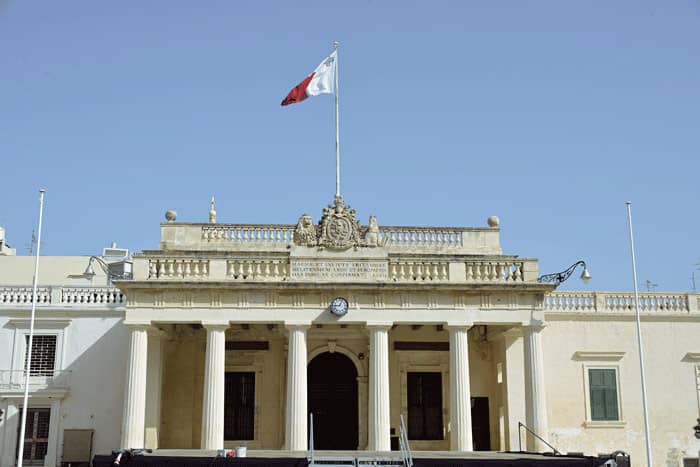
The Maltese also realised that ‘the more they appease the colonisers, the more opportunities they would have to obtain posts, receive business privileges, and gain pensions.’ So, the Maltese started to love their oppressors, ignoring that the Maltese education system was pushed ‘back by 80 years from when Bonaparte wanted to introduce free education in 1798. The British introduced public education in 1878.’ When they did introduce it, they controlled it. Back in 1813, British governors of Malta had orders to ‘do whatever it takes to make the Maltese loyal to the British crown’ according to Xuereb. Maltese sovereignty was stalled by over 120 years till the Sette Giugno (7th June 1919 bread protests with four Maltese shot dead) riots forced the British to accede some self-governship rights to Malta. In his book, Xuereb goes through a rigorous account of how the historical accounts written by ‘British forces personnel and ecclesiastical appeasers’ distorted history to suit the colonisers: French are evil, British are good and have saved the Maltese. ‘Since Independence [in 1964] some progress seems to have been made [but] we are still far from making history our vehicle to help future generations ‘self-define and identify’ themselves as new proud members of a liberated community’, states Xuereb.
Becoming Maltese
The manipulation of the perception of the British by the Maltese—the collective memory—is very extensive. Till today, in Malta’s capital there are ‘eight outsized British coats of arms around the Maltese Presidential Palace [built by the Order, and] over twenty British monuments, the majority of sepulchral nature [that] make more sense in a British naval cemetery,’ opines Xuereb. Maltese heroes have not received the same standing.
So why have Maltese politicians with over 50 years of Independence not put matters straight? Xuereb thinks that British indoctrination is still too widespread—take as an example how the Anglican British joined local band clubs and sat on the right hand of the Catholic Archbishop. The largest axe Xuereb grinds is the George Cross on the Maltese flag. King George VI placed the George Cross on the Maltese flag on 29th December 1943 for Malta’s valour in WWII. ‘It is a medal of courage, but a medal is for a museum. On a flag it becomes a symbol.
We are practically one of the last ex-colonies who still carries the symbol of colonialism on our flag.’ Fiji and New Zealand are both planning to redesign their flags. Xuereb does not think the Maltese associate with this colonial symbol at all. The Maltese Cross—not the George Cross—is found on Maltese Euro coins, in logos, in Malta-branded patterns, sports, on the National airline, the examples are endless. Back in the 60s and 70s, it made political sense to keep the George Cross: ‘Maltese people were still employed by British forces in Malta and there were still Maltese on [British-paid] pensions.’ Now, it seems that the George Cross is either vehemently supported by British sympathisers or its symbolism is forgotten.
the country needs a proper citizenship campaign that identifies what is Maltese
Removing the George Cross from Malta’s national flag is not the only change Xuereb advocates. Our politicians ‘relegated the Sette Giugno monument to the periphery of our capital city’ while the city’s founder La Vallette was ‘dumped behind the ruins of the Opera House, now half-baked into some kind of unfinished symphony.’ These decisions need to be corrected.
The Maltese heroes ‘Vassalli, Mitrovich, Sciberras need to be remembered,’ states Xuereb. History needs to be more balanced with more than one narrative taught to children. ‘Young Maltese citizens should be brought up respecting their own national story. With research, critical analysis, and debate we should put each and every past relationship in its proper dimension. It was wrong to distort the French connection, and likewise, it would be wrong to erase the British one after Independence.’
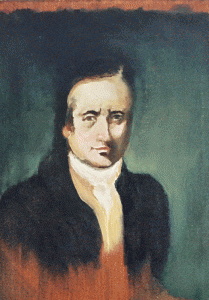
Mikiel Anton Vassalli (1764–1829) needs to be remembered with a monument in Valletta. In Paris there is a new authentic description of Vassalli that Xuereb found in 2013. Vassalli was not just a linguist but a patriot and politician. He has not been wholly rehabilitated.
Another monument should be dedicated to the 10,000 people who perished between 1798–1800 no matter which side they fought for. They should be included in a monument that remembers the event without taking sides.
Xuereb outlines it best: ‘the country needs a proper citizenship campaign that identifies what is Maltese and what a Maltese citizen could be proud of besides modern politicians and legends of bravery. Visionary Maltese who gave all their energy, personal belongings and, sometimes, their lives should be acknowledged even if they are not well known. Let us stand on our two feet and stop feeling inferior by adopting colonial symbols and monuments erroneously believing that they would distinguish us internationally. On the contrary, it is only prolonging our mediocrity.’ Throughout our history, it seems that the Maltese people have done their best with the short end of the stick. Malta needs to cure itself of Stockholm Syndrome.

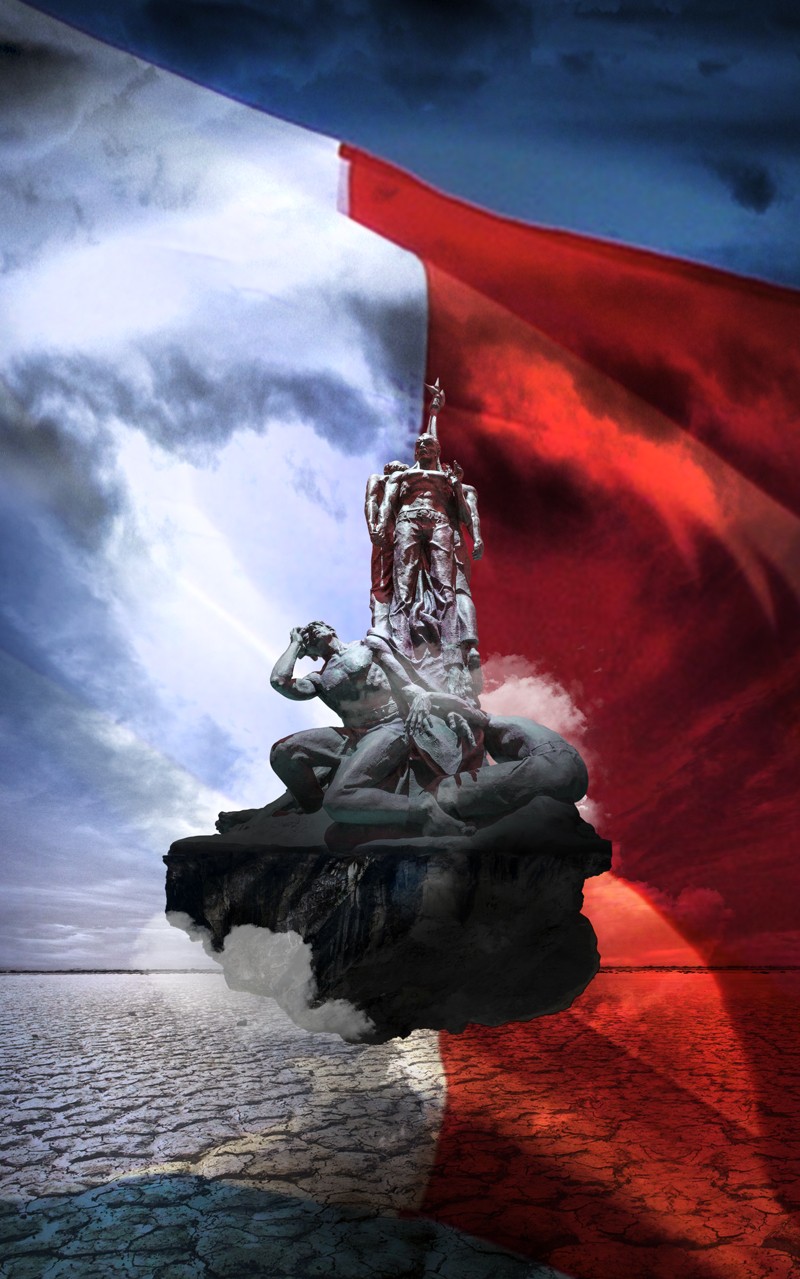
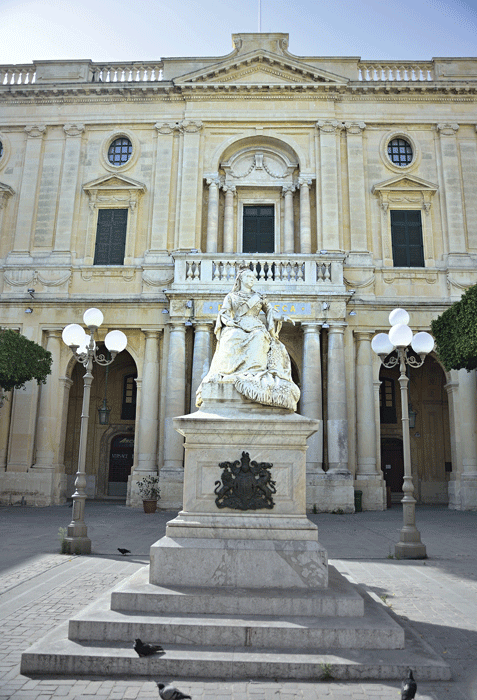



Comments are closed for this article!